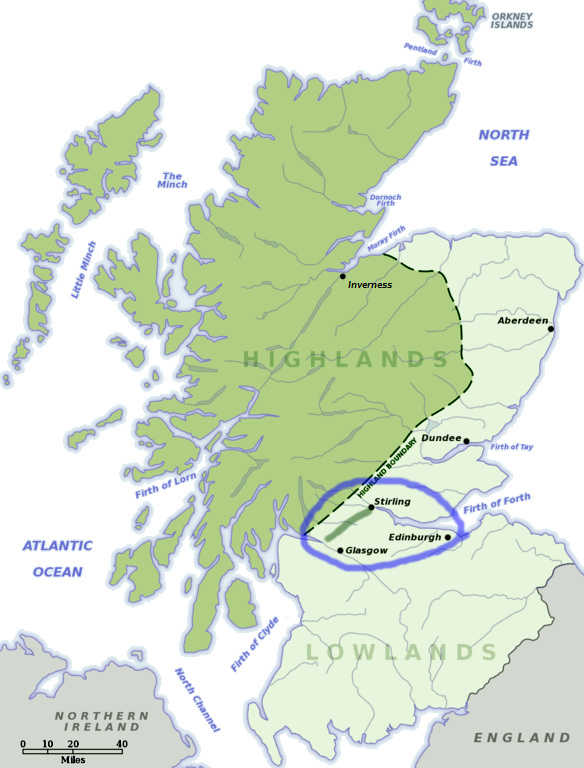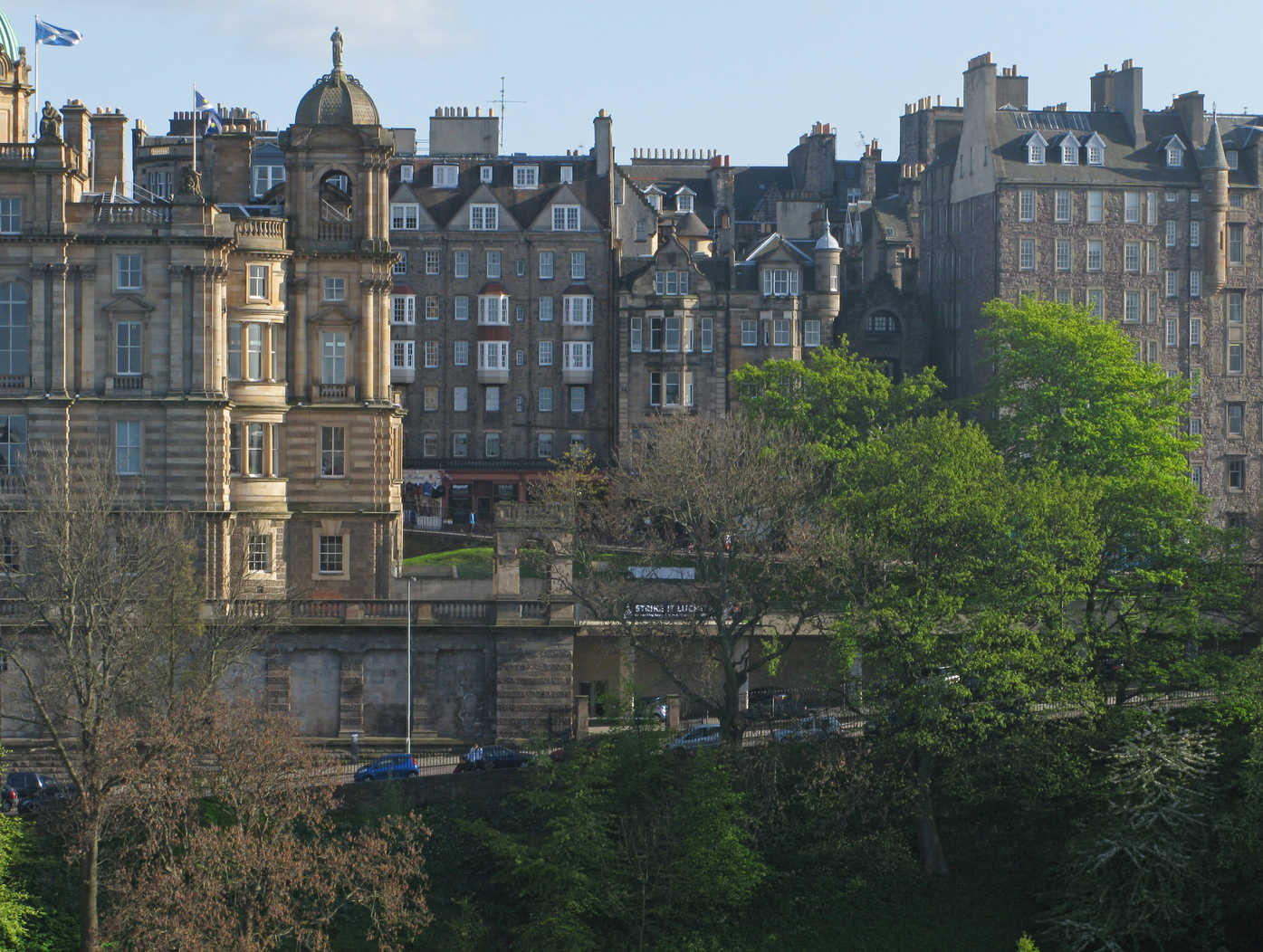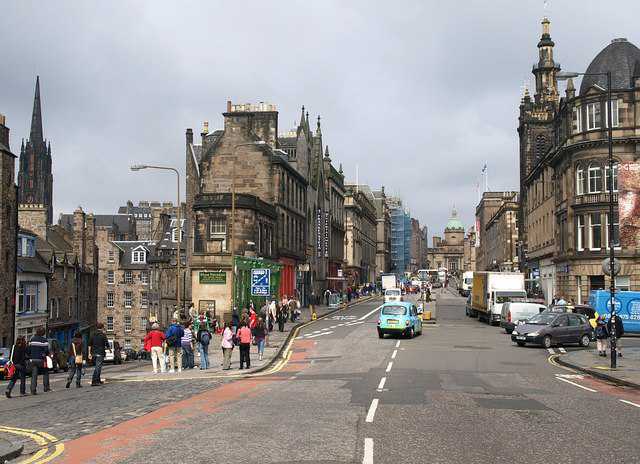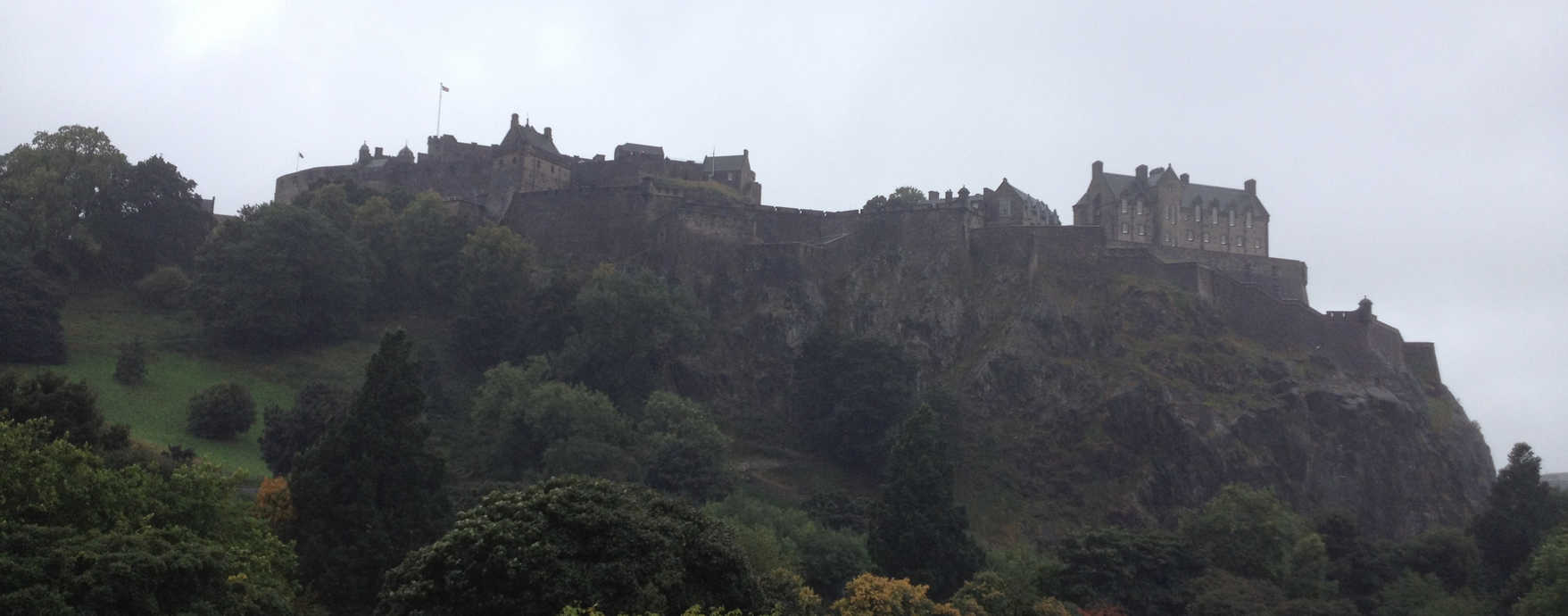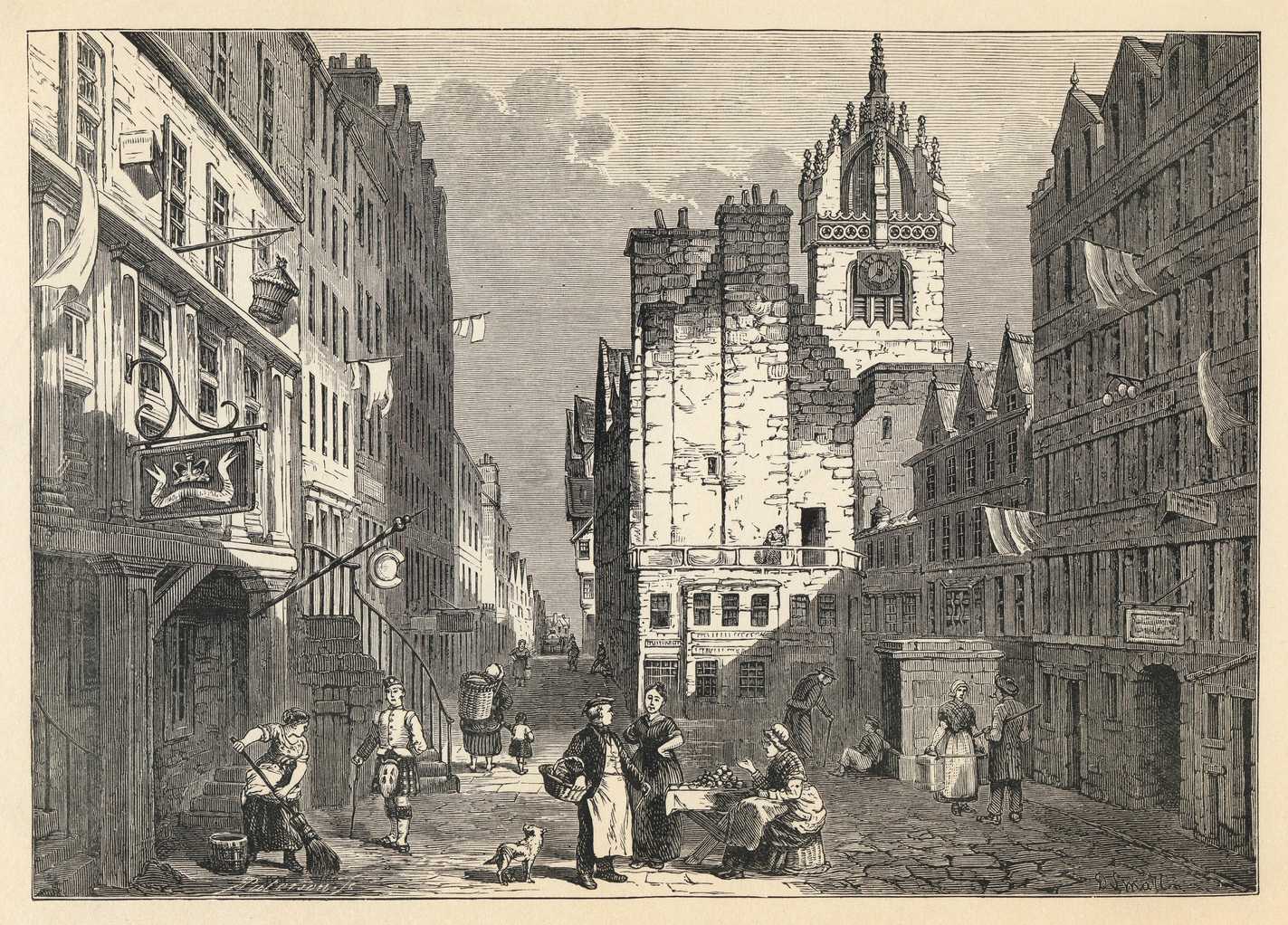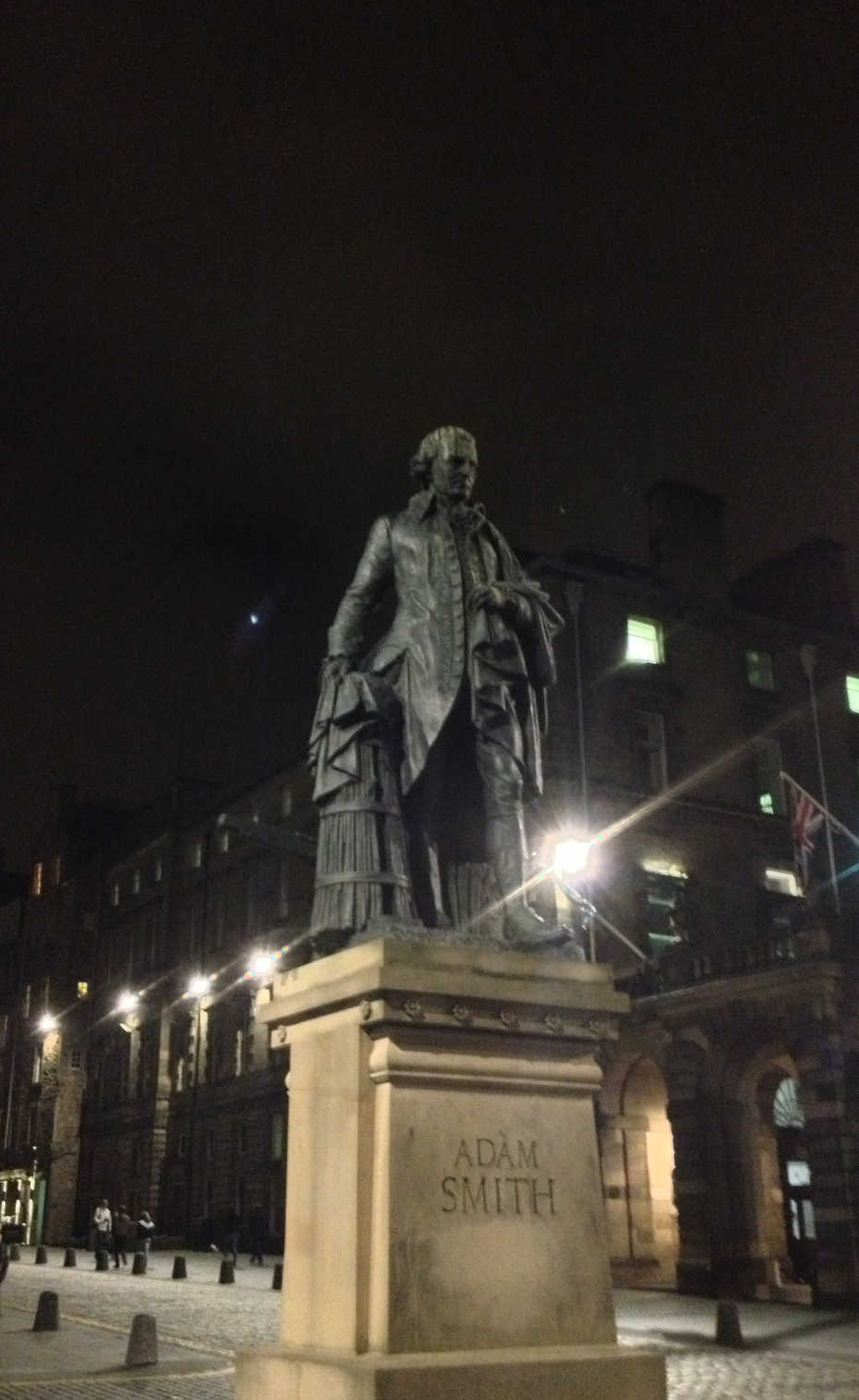First let’s look look at the shape of Scotland. The circled area is, to a crude approximation, Scotland’s Central Belt, where most of the important stuff is.
The green line from Stirling to the Firth of Clyde, the fjord pointing toward Glasgow, is about twenty-five miles; craggy and embroidered with rivers, and is most conveniently crossed near Stirling. (If you cross further west, the Highlands will likely force you towards Stirling anyway). Most of the great battles of the Scottish-English conflicts were fought in the circled area, and hereos were born fighting over that green line[1].
South of there is an expanse of empty lowlands, the so-called “Uplands”, which are even less populated than the Highlands. There’s almost nothing there but hills and they only present a two days’ march for an English army. But beyond, the terrain, the population, and “neck” of Scotland presented natural defenses against the English.
Edinburgh is at the very edge of the Central Belt and on the wrong side of all those natural defenses. The English never took Scotland by force[2], but they took Edinburgh repeatedly. Edinburgh was once invaded by the English after the Union of Great Britain, perhaps for old times’ sake, and was also twice invaded by Scots.
But Edinburgh sat next to the best port Scotland had at the time (called Leith, about two miles away) and so it became the economic and cultural capital–and eventually the real capital–of Scotland. But owing to its unique defensive situation—that is, the lack of one—while other old cities built outwards, Edinburgh built up, and over, and sideways within the city walls.
A maze of twisty little passages
Edinburgh is a city of mazes. Everywhere is a maze. Many parts of the city live on two or three levels. You might try to access a building from the George IV bridge, only to find out you should have entered from the Cowgate, which crosses thirty or so feet under the bridge. The old roads tend to snake up and down the hills, and new roads plow over and through and atop buildings. Between them are a maze of alleys called “closes”, often covered, that go through staircases and old stone archways and hidden secluded squares. One gets the feeling of being in a Dungeons and Dragons city, or perhaps an open-air Hogwarts. (The first of the Harry Potter books was written mostly from cafés in the Old Town.)
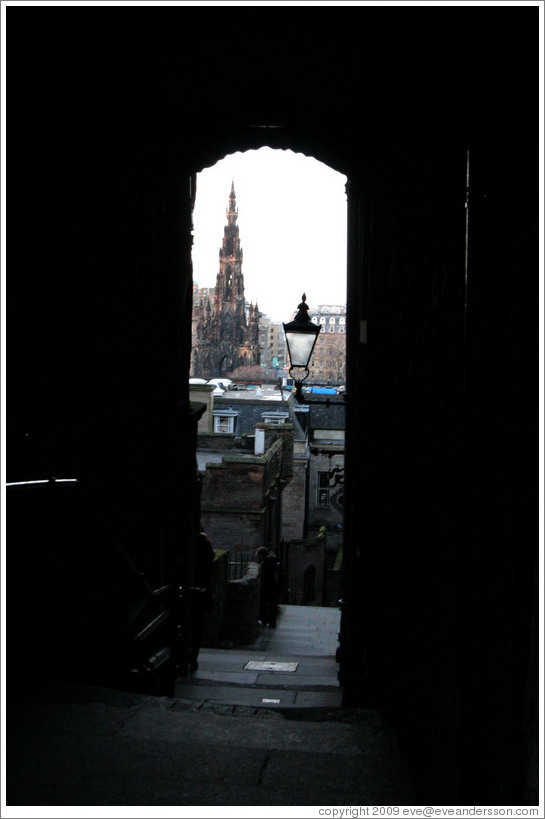
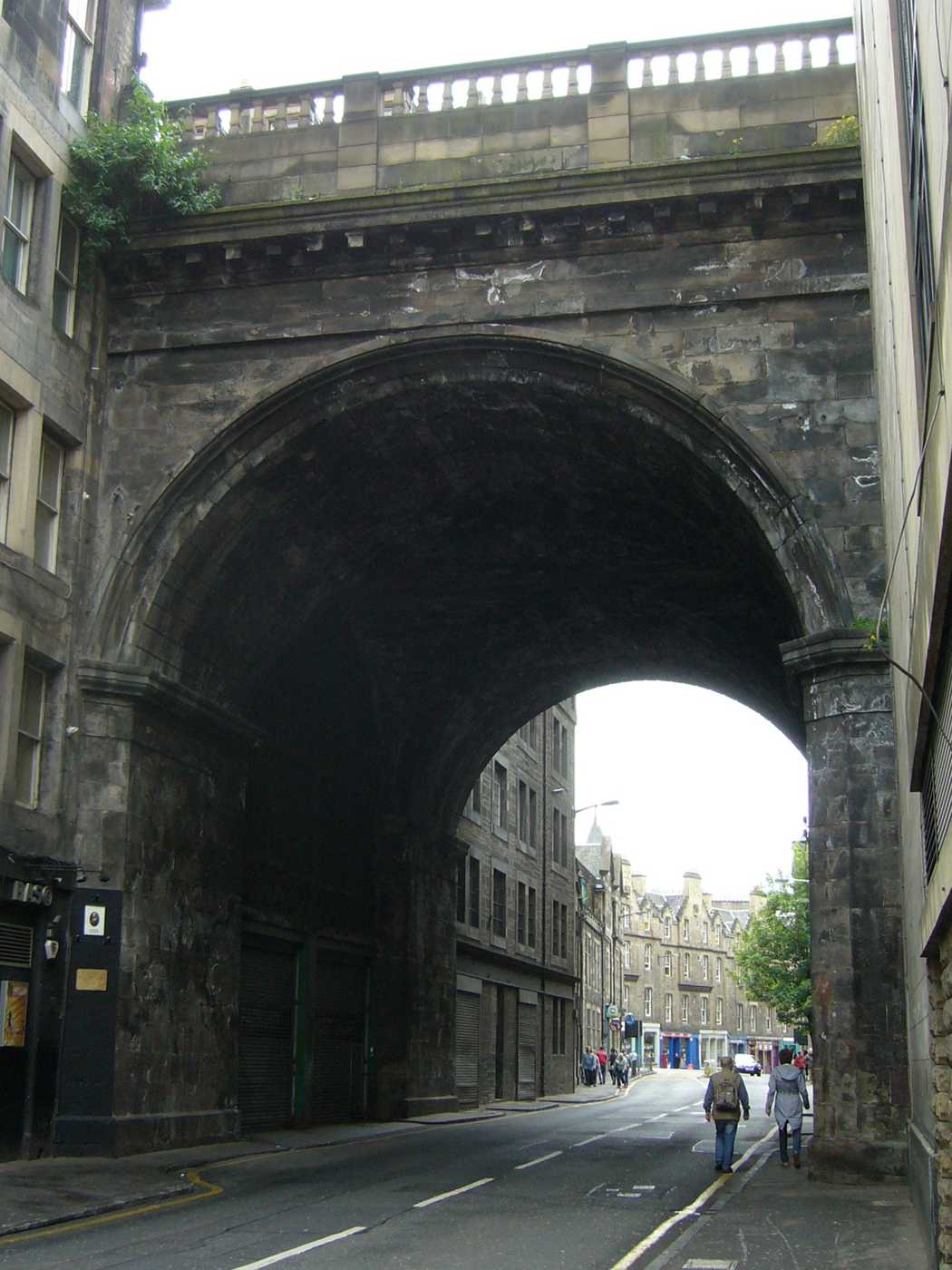
These buildings are built right up against each other, and often shops, pubs, hotels, and hostels span multiple buildings. The hallways are themselves twisty and go up and down where they don’t align. One hostel I was at had a staircase to nowhere, just a blank wall at the top. One hotel required you to enter from a completely different street if you were on a certain floor, even though the floor was in between two others accessible the normal way.
When all this was built and lived in, the plumbing was inadequate and waste tended to flow down into a lake beyond the walls and below the castle cliff.
On some days, the winds over the lake of sewage blew in an unfortunate direction, which is how Edinburgh got its nickname…
Auld Reekie
In the old city the wealthy and the poor and the educated and the illiterate lived in the same towering stone buildings. Social classes could not avoid each other as they might have in London, and matters of birth and station in life mattered far less to Scots in the first place. An English observer wrote:
On the same building lived families of all grades and classes, each in its flat in the same stair—the sweep and caddie in the cellars, poor mechanics in the garrets, while in the intermediate stories might live a noble, a lord of session, a doctor or city minister, a dowager countess, or writer; higher up, over their heads, lived shopkeepers, dancing masters or clerks…
The city tolerated Catholics, Presbyterians, Episcopalians, atheists, loyalists, Jacobites, nationalists. They did not live in peace, as Edinburgh (and Scotland) frequently erupted in violence. But they lived together, in the closest of peaces that the Scots would tolerate, probably. Social circles were highly mixed with many people of many trades and social classes frequenting the same pubs and clubs. One influential social club—the “Easy club”—would turn nobody away. This sort of densely packed social mingling, part perhaps due to Scottish attitudes but certainly partly forced, was unprecedented in history, and it created an outpouring of thought unprecedented in history. After the Union of Great Britain, Edinburgh became the center of the “Scottish Enlightenment”, which produced the philosophy of utilitarianism, the field of economics, and significant contributions to humanism and empiricism, among other things.
How natural, one imagines, that Adam Smith lived in Edinburgh, who first peeled back the layers of society to examine what made a society prosperous instead of poor. And David Hume, perhaps when walking these old cobblestones in the bustle of the crowd, observed:
“that however other nations may rival us in poetry, and excel us in some other agreeable arts, improvements in reason and philosophy can only be owing to a land of toleration and of liberty…”
and Hume, the empiricist atheist who rejected most religion and philosophy as the work of fools, no doubt was grateful that he lived in a city of “toleration and liberty”, or at least the closest you could get in that time of history. As these two men virtually invented modern economics and science, respectively, one must admit that of toleration and liberty did a pretty good job. I have not even touched of the dozen or so other famous philosophers and writers that lived in or passed through Edinburgh.
The end of the whole mess
The city began expanding outwards starting in the mid 1760s, and the acceleration of its expansion coincides with the dwindling of the Scottish Enlightenment. I don’t think this is a coincidence. The new homes for the wealthy, built across the valley north of Edinburgh, were large, single-family, and were planned with entire separate alleys for servants and deliveries. I wonder if they thought they were leaving anything behind in the smelly, cramped old city. But when we shelter ourselves and choose our circumstances and comforts, we hide from part of the world and miss out on some categories of humanity, as Edinburgh lost its Hume-anity as its top citizens depopulated the city and the light of the Scottish Enlightenment faded from within its walls. This is a good lesson for the traveler: live in the world, eschew those segregating comforts and luxuries, and learn.
Credits
The map of Scotland is in the public domain.
The first picture of Edinburgh Old Town is by Ronnie McDonald and is reproduced here under the Creative Commons Attribution 2.0 Generic license.
The “hidden square” in Old Town is by Mike Pennington and is reproduced here under the Creative Commons Attribution-Share Alike 2.0 Generic license.
The picture of the Scott Monument through Advocates’ Close is by (Eve Anderson)[http://www.eveanderson.com] and is licensed under the Creative Commons 1.0 license.
The picture of the George IV Bridge is by Derek Harper and reproduced here under the Creative Commons Attribution-Share Alike 2.0 Generic license.
The picture of the George IV Arch over Cowgate is by Kim Traynor, and reproduced here under the Creative Commons Attribution-Share Alike 3.0 Unported license. Kim’s photographs are all over Wikipedia, and a few of us actually met him taking a picture of the Mercat Cross in Edinburgh, whereupon he gave us about a half hour lecture on Edinburgh’s Old Parliament, Mercat Crosses, and quite a bit more.
The identity of the author of the engraving of Old Town is unknown to me.
Footnotes
[1] Specifically, William Wallace at Stirling Bridge, and Robert the Bruce at Bannockburn.
[2] Cromwell managed to take more or less all of the Lowlands, but it’s arguable whether that counts as England invading Scotland, since it was all part of the big civil war.
